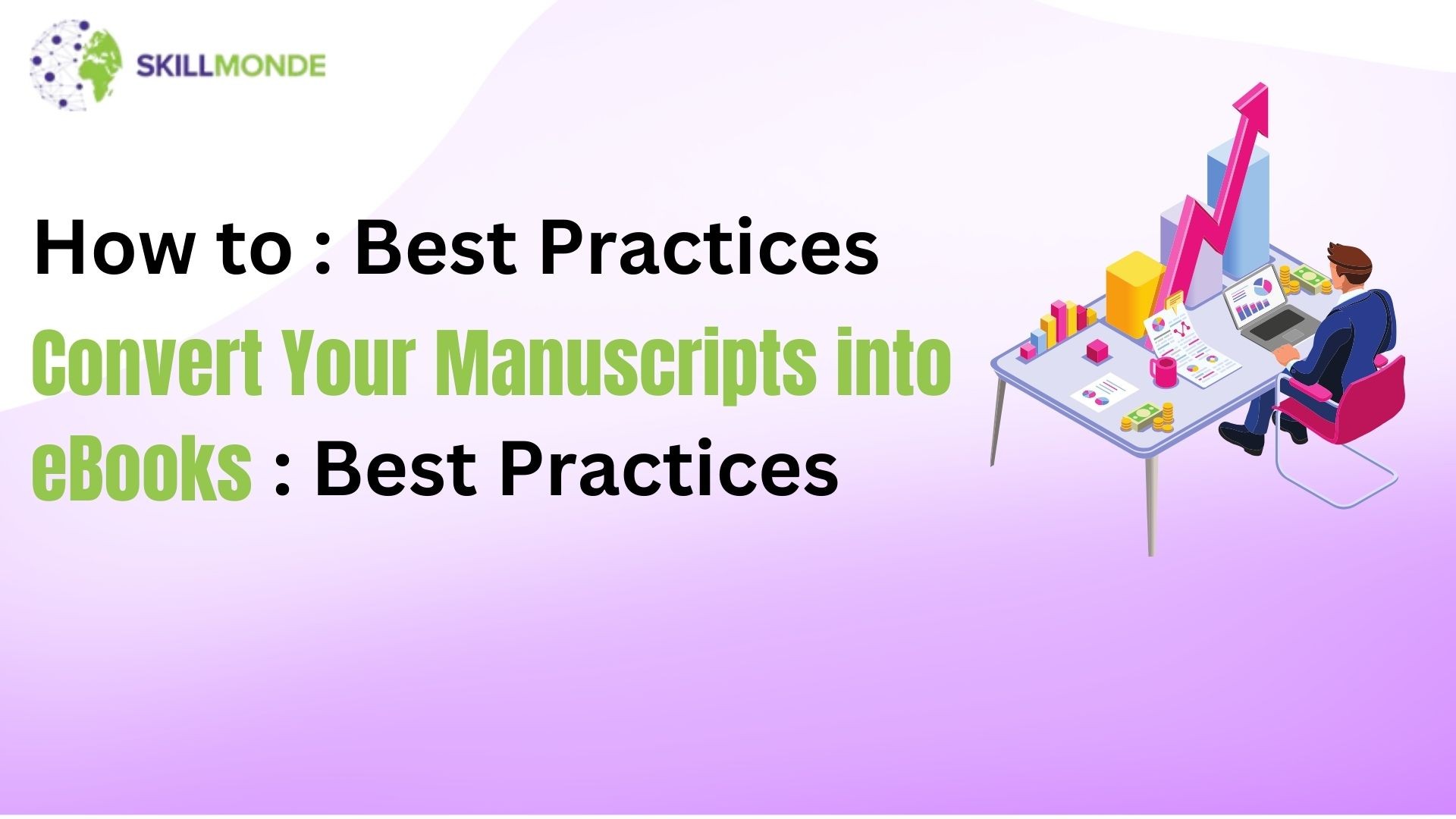Introduction:
Imagine you’ve written a fantastic manuscript that’s ready to be shared with the world, but you’re unsure how to make it accessible to today’s digital readers. With over 191 million eBooks sold in the U.S. alone in 2021, converting your manuscript into an eBook is no longer optional; it's essential. The shift to digital formats offers broader reach, lower distribution costs, and instant access for readers across the globe.
But how do you ensure a smooth and successful transition from manuscript to eBook? This blog explores the best practices for eBook conversion, including the tools and techniques you need to make your digital book look professional, engaging, and easy to read on any device.
Step-by-Step Guide to Converting Manuscripts into eBooks
- Choose the Right eBook Format The first step in converting your manuscript into an eBook is choosing the correct format. The two most popular eBook formats are:
- EPUB: Widely accepted across various eReaders, including Apple Books, Google Play Books, and Kobo. EPUB files are flexible and allow text to reflow, adjusting to different screen sizes.
- MOBI: Initially developed for Amazon Kindle devices, MOBI files are less flexible than EPUB but still widely used for Kindle eBooks.
- Best Practice: Start with an EPUB format since it's more universally accepted. You can then convert it into MOBI if you plan to distribute your book on Amazon Kindle.
- Prepare Your Manuscript for Conversion Before you begin the conversion process, make sure your manuscript is well-formatted:
- Use Consistent Styles: Apply consistent styles for headings, subheadings, paragraphs, and lists. This consistency will help maintain the structure of your eBook during conversion.
- Remove Excess Formatting: Delete unnecessary spaces, tabs, and page breaks. Ensure there are no hard line breaks within paragraphs.
- Check for Images and Graphics: Ensure that all images and graphics are high-resolution and appropriately placed within the text.
- Tools to Use:
- Microsoft Word or Google Docs: Both tools provide formatting features to ensure consistency throughout your manuscript.
- Scrivener: A writing tool that helps organize your manuscript into chapters and sections, maintaining consistent formatting.
- Use Professional eBook Conversion Tools Once your manuscript is prepared, it’s time to convert it into an eBook format using professional tools:
- Calibre: A free, open-source eBook management tool that supports various formats, including EPUB and MOBI. Calibre allows you to convert your manuscript, customize metadata, and preview how it will appear on different devices.
- Adobe InDesign: A professional design tool ideal for creating complex eBooks with multiple images, interactive elements, and custom layouts. InDesign allows for precise control over typography and layout.
- Vellum: A Mac-based software that simplifies eBook formatting and conversion. Vellum is known for its intuitive interface and professional-quality output, especially for authors focused on clean, elegant eBook designs.
- Best Practice: Choose a tool that matches the complexity of your manuscript. For straightforward text-based eBooks, Calibre or Vellum may suffice. For more complex projects with heavy graphics or interactive elements, Adobe InDesign is recommended.
- Optimize Your eBook for Different Devices eBooks are read on various devices, from smartphones to tablets to dedicated eReaders. Ensuring your eBook looks good on all these platforms is crucial:
- Test Across Devices: Use eBook preview tools (such as Kindle Previewer or Apple Books Preview) to see how your eBook appears on different devices and screen sizes.
- Adjust Fonts and Layouts: Choose readable fonts and adjust the layout to ensure the text flows naturally and looks appealing on all devices.
- Ensure Accessibility: Add alt-text to images for visually impaired readers and ensure your eBook complies with accessibility guidelines.
- Tools to Use:
- Kindle Previewer: A free desktop application that lets you see how your eBook will look on various Kindle devices.
- Sigil: An open-source EPUB editor that allows you to fine-tune your eBook’s formatting and layout.
- Incorporate Interactive Elements (If Applicable) To make your eBook more engaging, consider adding interactive elements:
- Hyperlinks: Link to external resources, references, or related content to provide additional value to your readers.
- Multimedia: Embed videos, audio files, or interactive quizzes to enhance the learning experience.
- Navigation Aids: Use a table of contents, bookmarks, and chapter links to help readers navigate your eBook easily.
- Best Practice: Make sure all interactive elements work correctly on different devices and do not hinder the reader’s experience.
- Proofread and Test Your eBook After converting your manuscript into an eBook format, thoroughly proofread it to catch any errors that might have occurred during the conversion process:
- Check for Formatting Issues: Ensure that fonts, images, and spacing are consistent throughout the eBook.
- Test All Links and Multimedia: Verify that all hyperlinks, multimedia, and interactive elements are functional.
- Get Feedback: Share your eBook with a small group of beta readers or colleagues to get feedback on readability and functionality.
- Tools to Use:
- Adobe Acrobat Pro: For checking layout consistency and functionality in PDFs.
- Grammarly: To catch any remaining grammar or spelling errors.
- Publish and Distribute Your eBook Once your eBook is ready, it's time to publish and distribute it across various platforms:
- Select Your Distribution Channels: Decide where you want to sell your eBook. Options include Amazon Kindle Direct Publishing, Apple Books, Google Play Books, Kobo, and your own website.
- Upload Your eBook: Follow each platform’s guidelines for uploading and formatting.
- Promote Your eBook: Use social media, email newsletters, and content marketing to promote your eBook to your target audience.
Conclusion: Elevate Your Manuscripts with Professional eBook Conversion
Converting your manuscript into a professional eBook involves careful planning, the right tools, and attention to detail. By following these best practices, you can create a high-quality eBook that is accessible, engaging, and compatible across all devices.
Ready to convert your manuscript into a professional eBook? Contact SkillMonde today to learn more about our comprehensive eBook production and formatting services!
